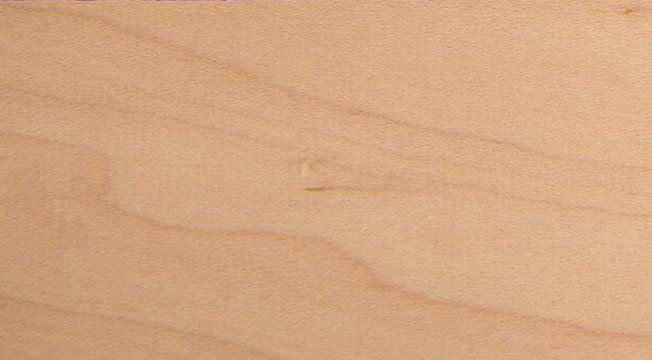Furniture woods.........Bird's Eye maple ......... Illustrated FURNITURE Glossary
Maple
A handsome, pale, satiny hardwood of close grain, plentiful in the northern part of America.
Maple is of several qualities, the bird's-eye maple being most highly valued. Its regular or plain graining is subject to several very attractive markings -- curly (a tiger striping), bird's eye, blister, and quilted.
It somewhat resembles satinwood, but is more buff than yellow, has more curl, and more "bird's-eye." Old maple takes on a rich honey color.
Much used for furniture. especially in New England, ever since earliest times. Often it was an inexpensive substitute for walnut or mahogany, also for satinwood inlay, etc. Maple is light and not very durable, and is used only in the cheaper kinds of furniture.
Maple that has a curly grain is often used for violin backs (the pattern formed is known as a fiddle-back figure). Burls, leaf figure, and bird's-eye figures found in maple are used extensively for veneers. The bird's eye figure in maple is said to be the result of stunted growth and is quite rare.
Many pieces of furniture have been established as American because the underframing or secondary wood is maple.
- Highboy - From the Georgia Forman House
- Highboy - Dana Tillou Fine Arts
- Highboy - Private collection, Amherst, NY Transitional
- Curly maple strip - Winterthur Museum
- Tiger maple slats, Country Sheraton cane chair - Boies-Lord House (Hamburg)
- Maple veneer, circa 1860 sideboard - Boies-Lord House (Hamburg)
Photos below are not necessarily accurate to scale or color

Bare wood.

Bare wood.
See also: laminated ..... veneered ..... inlay ..... marquetry
|
Curly Maple
Curly Maple is not actually a species, but simply a description of a figure in the grain - it occurs most often in soft maples, but is also seen in hard maples. It is so called because the ripples in the grain pattern create a three dimensional effect that appears as if the grain has “curled” along the length of the board. Other names for this phenomenon are: tiger maple, fiddleback maple, (in reference to curly maple’s historic use for the backs and sides of violins), or flamed maple. Unlike quilted maple, curly maple is most pronounced when the board is quartersawn, and the curls usually become much less pronounced or absent in flatsawn boards. Hence, on wide boards where the grain tends to be close to vertical (quartersawn) near the edges and horizontal (flatsawn) in the center, the curly pattern will be most evident on the edges of the board, with the figure diminishing in the center. It is not completely clear what environmental conditions (if any) cause this phenomenon, but there are different grades of curly maple, which greatly affect its price. - The Wood Database: Curly Maple (online July 2016) |
Examples:
- Plethora of furniture examples - Lang Collection
- Highboy - From the Georgia Forman House
- Highboy - Dana Tillou Fine Arts
- Highboy - Private collection, Amherst, NY Transitional
- Curly maple strip - Winterthur Museum, Winterthur, Delaware
- Tiger maple slats, Country Sheraton cane chair - Boies-Lord House (Hamburg)
- Maple veneer, circa 1860 sideboard - Boies-Lord House (Hamburg)
|
Special thanks to Arthur Werner for his assistance. |
